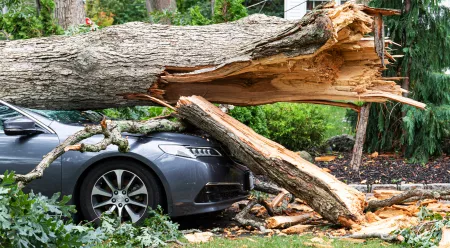As winter in Canada settles in across the country, there are things every driver can do to maximize the safety of their driving and prevent accidents.
Here are five things that will improve your winter driving.
START A QUOTE
Winter Tires
Only two provinces, Quebec (December 15 – March 15) and British Columbia (October 1 – March 31) require winter tires, by law, on highways during the winter months. That said, it’s still in your best interests, even if you’re not in Quebec or BC, to make sure your vehicle is in the best position possible to handle winter, including proper tires.
A Global News report in 2014 highlighted how few Canadians use winter tires. In Alberta, only 45% of vehicles were equipped with winter tires, below the national average of 51%. Considering the volume of snow Alberta receives, the winter tire percentage on vehicles should be significantly higher.
If you’re wondering what kind of winter tires to get, Wheels.ca has great recommendations, for all vehicle types. Find out more information here.
For your winter tires, it’s important to make sure the tire patterns are matching. Mixing thread patterns compromises the stability of the tires. You will also want to ensure your winter tire tread depth doesn’t dip below 3.5mm. Having 3.5mm of tread depth allows your tires to grip snow and ice better.
Obey Weather Advisories
When the weather is extreme, obey the advisories and stay off the roads. The advisories get issued for a reason and that reason is that the conditions are too dangerous to be driving in.
Many accidents or situations are caused and happen when people ‘’know better’’ than the professionals that are trained to monitor and address extreme weather. Some accidents, and potential heartache, can be saved by obeying weather advisories.
Top-up Fluid Levels
This pertains to all fluids, including gasoline. It is hard to predict the weather and what affect it can have during your travels. If you happen to be stranded on the side of the road, for an extended period of time, a full tank of gas means you can keep your vehicle on and running, so you stay warm.
Another important fluid to keep topped-up is your windshield washer fluid. When things begin to thaw, the combination of snow, gravel, dirt, road salts, etc. makes for some gross driving conditions. Being able to keep your windshield clean is an essential part of being able to see clearly and drive safely.
Most mechanic and auto shops will offer a fluid top-up package, if you’re unsure of what your vehicle needs.
Get an online car insurance quote.
Understand Your Driving Limitations
For as good of a driver as everyone wishes to believe they are, often, they are not. Deep down, every driver should have a good idea of their driving ability and know if it’s a risk – to themselves and others – to be out on the road at certain times.
Knowing your driving limitations, and only driving in situations where you're comfortable behind the wheel, will go a long way to reducing the likelihood of you being involved in a car accident. If you don’t trust your driving in the snow, then don’t drive when it’s snowing.
Whatever the situation is, if you know you’re in over your head, it’s best to acknowledge and embrace those insecurities and stay off the road.
Obey the Law
Winter driving is as inopportune of time, as any, to drive at extreme speeds or be distracted behind the wheel. If anything, you should be more cautious in your driving habits. This applies to speed, as well as the distance between you and the vehicle in front of you.
Weather has an affect on you as a driver, as well as all other drivers on the road. Being a courteous driver will help fellow drivers avoid needing to speed or hit the brakes quickly, especially when traffic is at a merging point.
All drivers should always obey the law. In adverse conditions, obeying driving laws is of utmost importance.



